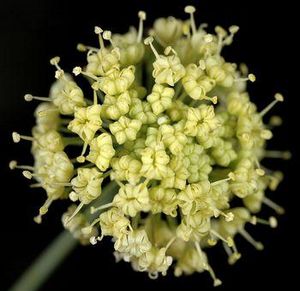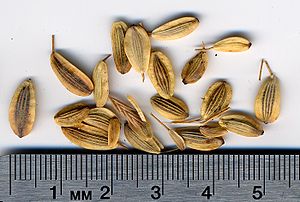Difference between revisions of "Lomatium nudicaule"
| Line 1: | Line 1: | ||
| − | + | '''Common name:''' Naked-stemmed hogfennel, or Pestle parsnip | |
| + | '''Abbreviation Code (Codon):''' LONU2 | ||
===Taxonomy=== | ===Taxonomy=== | ||
[[File:LONU_GDCarr_flw_good.jpg|thumb|300px|right|]] | [[File:LONU_GDCarr_flw_good.jpg|thumb|300px|right|]] | ||
| Line 15: | Line 16: | ||
*Genus - Lomatium Raf. – desert parsley | *Genus - Lomatium Raf. – desert parsley | ||
*Species - Lomatium nudicaule (Pursh) J.M. Coult. & Rose – barestem biscuitroot | *Species - Lomatium nudicaule (Pursh) J.M. Coult. & Rose – barestem biscuitroot | ||
| + | ===Plant Description=== | ||
| + | General: Stout perennial herb from a taproot, glabrous, strongly glaucous; stems solitary to several, 20-90 cm tall. <ref name="Bartow, Amy L. 2003"> Propagation protocol for production of container Lomatium nudicaule Pursh plants; Corvallis Plant Materials Center, Corvallis, Oregon. In: Native Plant Network. URL: http://www.nativeplantnetwork.org (accessed 17 October 2006). Moscow (ID): University of Idaho, College of Natural Resources, Forest Research Nursery.</ref> | ||
| − | + | Leaves: Mostly basal, large, compound, 1-3 times divided; ultimate segments 3-30, entire or shallowly toothed, 2-9 cm long, 10-60 (rarely 4) mm wide, veiny, often stalked. <ref name="Bartow, Amy L. 2003"> Propagation protocol for production of container Lomatium nudicaule Pursh plants; Corvallis Plant Materials Center, Corvallis, Oregon. In: Native Plant Network. URL: http://www.nativeplantnetwork.org (accessed 17 October 2006). Moscow (ID): University of Idaho, College of Natural Resources, Forest Research Nursery.</ref> | |
| − | + | ||
| − | + | ||
| − | Lomatium | + | |
| + | Flowers: Inflorescence of compound umbels; flowers yellow, small, stalks of unequal length; involucels lacking. <ref name="Bartow, Amy L. 2003"> Propagation protocol for production of container Lomatium nudicaule Pursh plants; Corvallis Plant Materials Center, Corvallis, Oregon. In: Native Plant Network. URL: http://www.nativeplantnetwork.org (accessed 17 October 2006). Moscow (ID): University of Idaho, College of Natural Resources, Forest Research Nursery.</ref> | ||
===Distribution=== | ===Distribution=== | ||
| Line 53: | Line 54: | ||
Seeds benefit from stratification, slow to establish. Seeds germinated within 1-2 weeks. <ref name="Bartow, Amy L. 2003"> Propagation protocol for production of container Lomatium nudicaule Pursh plants; Corvallis Plant Materials Center, Corvallis, Oregon. In: Native Plant Network. URL: http://www.nativeplantnetwork.org (accessed 17 October 2006). Moscow (ID): University of Idaho, College of Natural Resources, Forest Research Nursery.</ref> | Seeds benefit from stratification, slow to establish. Seeds germinated within 1-2 weeks. <ref name="Bartow, Amy L. 2003"> Propagation protocol for production of container Lomatium nudicaule Pursh plants; Corvallis Plant Materials Center, Corvallis, Oregon. In: Native Plant Network. URL: http://www.nativeplantnetwork.org (accessed 17 October 2006). Moscow (ID): University of Idaho, College of Natural Resources, Forest Research Nursery.</ref> | ||
| − | |||
| − | |||
| − | |||
| − | |||
| − | |||
| − | |||
| − | |||
| − | |||
Revision as of 08:07, 22 May 2012
Common name: Naked-stemmed hogfennel, or Pestle parsnip
Abbreviation Code (Codon): LONU2
Contents
Taxonomy
- Kingdom Plantae – Plants
- Subkingdom Tracheobionta – Vascular plants
- Superdivision Spermatophyta – Seed plants
- Division Magnoliophyta – Flowering plants
- Class Magnoliopsida – Dicotyledons
- Subclass - Rosidae
- Order - Apiales
- Family - Apiaceae – Carrot family
- Genus - Lomatium Raf. – desert parsley
- Species - Lomatium nudicaule (Pursh) J.M. Coult. & Rose – barestem biscuitroot
Plant Description
General: Stout perennial herb from a taproot, glabrous, strongly glaucous; stems solitary to several, 20-90 cm tall. [1]
Leaves: Mostly basal, large, compound, 1-3 times divided; ultimate segments 3-30, entire or shallowly toothed, 2-9 cm long, 10-60 (rarely 4) mm wide, veiny, often stalked. [1]
Flowers: Inflorescence of compound umbels; flowers yellow, small, stalks of unequal length; involucels lacking. [1]
Distribution
Widely distributed throughout Washington; British Columbia south to California, east to Idaho and Utah.[2]
Habitat
Dry, open areas; common in shrub-steppe, but found in mountain meadows.[2]
Seed
Seed sample from: 2011
Average Measurement: 10.7 x 4.9 x 0.9
Measurement Range: L: 9 – 12.5, W: 4 – 5.75, D: 0.5 – 1.1
Features
Shape: Seeds widely winged and schizoid. Hilum puckered.
Color: Wings and ribs off-white to tan. Hilum is darker. Outer seed face has light to dark brown center, bisected by three tan ribs that cross longitudinally from hilum to opposite apex. Inner seed face is bisected by one major rib, and then has darker brown stripes mixed with tan stripes.
Surface: Seeds smooth and matte.
Latitudinal Cross Section: elliptical ![]()
Longitudinal Cross Section: elliptical ![]()
Propagation
Seeds benefit from stratification, slow to establish. Seeds germinated within 1-2 weeks. [1]
Bloom Time
Early Spring [3]
Uses
- Seeds chewed for colds [4]
- Poultice of chewed seeds applied or chewed seeds blown on head for headaches.[4]
- Infusion of seeds taken by pregnant women to insure an easy delivery.[5]
References
- ↑ 1.0 1.1 1.2 1.3 Propagation protocol for production of container Lomatium nudicaule Pursh plants; Corvallis Plant Materials Center, Corvallis, Oregon. In: Native Plant Network. URL: http://www.nativeplantnetwork.org (accessed 17 October 2006). Moscow (ID): University of Idaho, College of Natural Resources, Forest Research Nursery.
- ↑ 2.0 2.1 http://biology.burke.washington.edu/herbarium/imagecollection.php?Genus=Lomatium&Species=nudicaule
- ↑ http://www.pnwflowers.com/flower/lomatium-nudicaule
- ↑ 4.0 4.1 Turner, Nancy Chapman and Marcus A. M. Bell 1971 The Ethnobotany of the Coast Salish Indians of Vancouver Island, I and II. Economic Botany 25(1):63-104, 335-339 (p. 89)
- ↑ Turner, Nancy Chapman and Marcus A. M. Bell 1973 The Ethnobotany of the Southern Kwakiutl Indians of British Columbia. Economic Botany 27:257-310 (p. 276)



